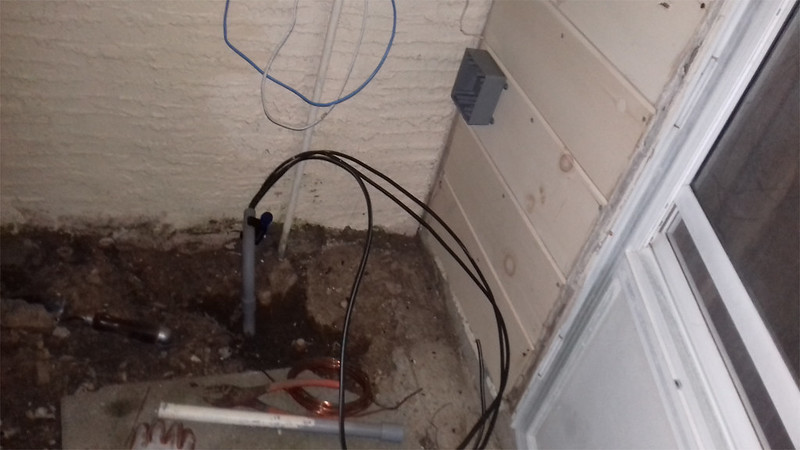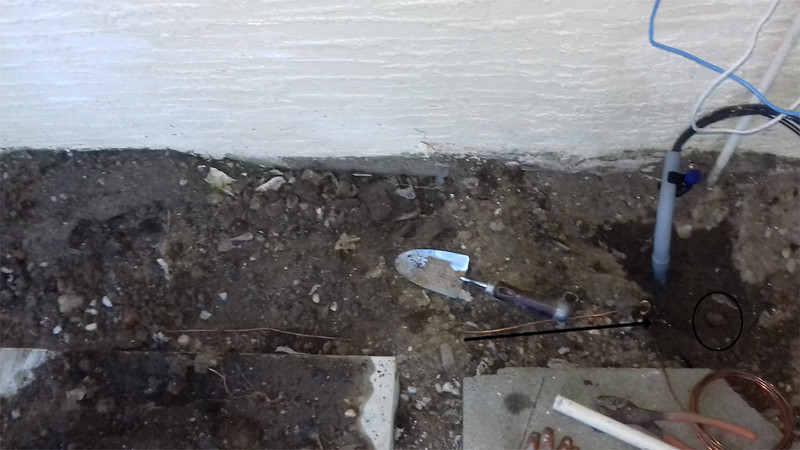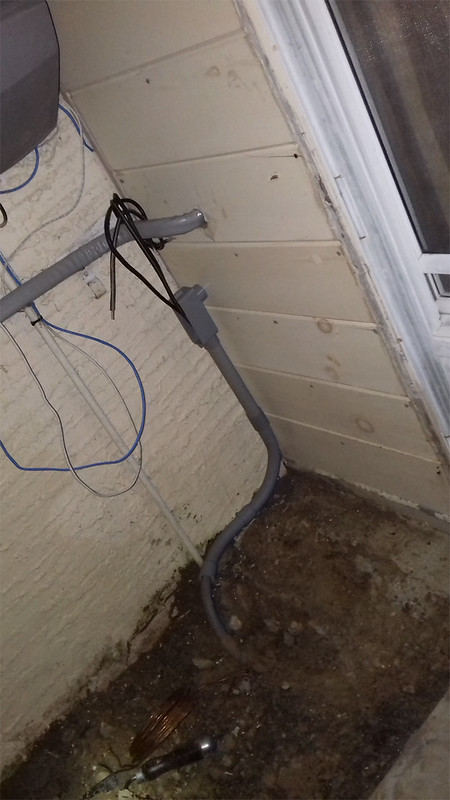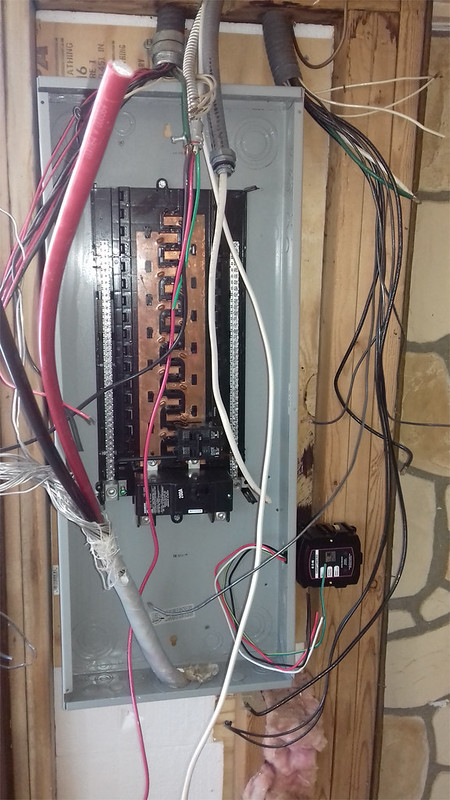With the ground cover that you describe and no adjacent driveway or parking I cannot see any inspector calling your Grounding Electrode Conductor (GEC) as exposed to severe physical damage. Since you are using #4 AWG wire no further protection will be required.WyrTwister:
I got what seems a very nice 200 amps Siemens circuit breaker panel about a year ago: it comes with a copper ground rod, the buses are all copper, and it is really very large. I don't have the panel in front of me to look, but as far as I can remember there is a copper rod bonding the neutral bar to the ground bar.
hornetd:
The weather head is right above the socket meter to wherein the service entrance cables descend into, the ground rods are just below the socket meter box besides the foundation and footing of the house (maybe 2 feet from and along the exterior walls) and the path that the ground wire travel is very short (maybe 12 ft all inn all ). And they all convert to the circuit breaker panel which maybe 5 feet from the socket meter. Besides, at the end of the day the area where the ground rods reside together with the ground wire will be covered with ground, landscape fabric, and river rocks (so hopefully no plants and weeds will dare to grow in there). Anyhow, I don't have a problem put it in a conduit once it exits the ground (can not be in a conduit at the segment that is connected the ground rods). Is Schedule Eighty Non Metallic Conduit (NMC) a form of pvc or liquidtight conduit (flexible)?
Don't worry, it will never be exposed to anything remotely close to physical damage. But just in case and to avoid any possible fuss I can put it inside a very short conduit.
thks!
Schedule Eighty Non Metallic Conduit is just PVC conduit with thicker wall. It is not at all flexible.
If you have yet to install the driven rod Grounding Electrodes you have an opportunity to vastly improve the surge and spike protection of your home's wiring system by installing them in a way that is more effective than what the National Electrical Code (USA) requires. The US National Institute of Standards & Technology (NIST) guidance on a more effective Grounding Electrode System is to drive the first of two Eight foot long driven rods through the bottom of a trench that has been dug to a depth of Three feet. The rod should be it's own length from any underground structure such as footers or foundation walls. The Second rod should be at least the total length of the two rods away from the first rod. The Second rod should also be it's own length away from any underground structure. If the structure is slab on grade then both rods can be adjacent to the outer wall if the Three foot depth to the top of the rod puts it below the bottom of the footer. The two rods are then connected to the Grounding Current Carrying Conductor of the service at any accessible point between the drip loop and it's termination at the Service Disconnecting Means. The GEC that is used to make that connection should be Number Two AWG or larger bare copper buried in the bottom of the Three foot deep trench for a length of at least Twenty feet.
The last step in protecting your entire wiring system from damage caused by Current Surges and Voltage Spikes is to install a whole house protector that integrates the protection of all metallic conductor carried electrical currents which enter your home in a single place. Such multi service protectors are available from a number of manufacturers and the cost is quite manageable.









